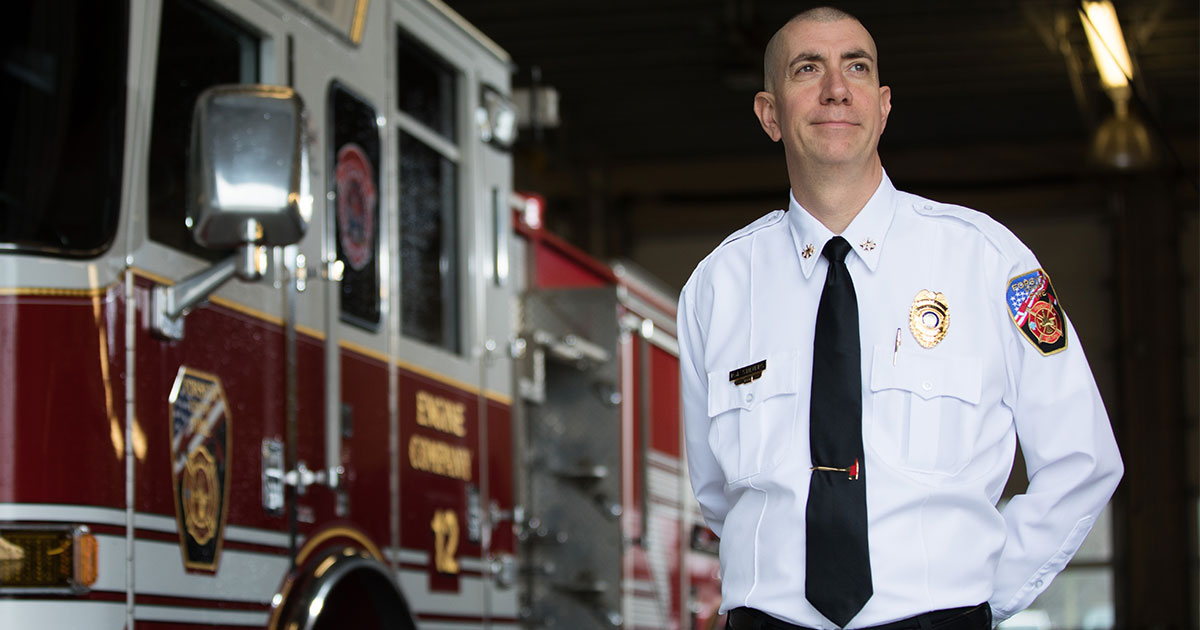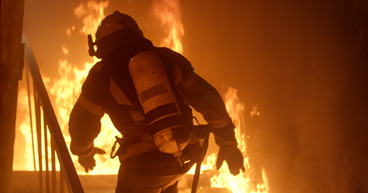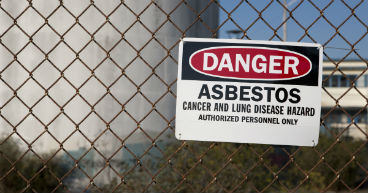
Firefighters and first responders are often more concerned about our safety than their own. They run into burning buildings or toward raging forest fires to save lives and property. Dozens of American firefighters die every year from building collapses, burns, explosions, cardiac arrest and other injuries caused in the line of duty.
As dangerous as the seen and known dangers of the first responder profession are, unseen or unknown hazards are also lurking in the shadows. Research shows that exposure to toxic gases, asbestos and other carcinogens and the constant high levels of stress may raise firefighters’ risk of developing diseases, including cancer. But as researchers learn more about the potential causes of increased cancer risk among first responders, more steps are being taken to raise awareness and adapt procedures in fire departments around the country, all in hopes of decreasing exposures to carcinogens and reducing the risk of cancer.
"Everyone knows it’s a dangerous job," Forsyth County Fire Division Chief and cancer fighter Jason Shivers told Fox5 TV in Atlanta. "What many people don't realize, even young firefighters may not realize, is the dangers that lurk in the things that we're exposed to during firefighting. When anything burns, the byproduct of combustion, that carbon, with combustion, has really bad things in it."
A much higher risk
The statistics paint a clear picture of cancer risk among firefighters in the United States. Compared to the general population, they have:
- A 9 percent higher risk of being diagnosed with cancer
- A 14 percent higher risk of dying from cancer
- Twice the rate of mesothelioma
- A higher likelihood of developing cancers at a younger age
The U.S. Centers for Disease Control and Prevention (CDC), says multiple studies show that firefighters are at higher risk of several specific cancers, including:
- Lung cancer
- Stomach cancer
- Esophageal cancer
- Intestinal cancer
- Kidney cancer
- Bladder cancer
- Prostate cancer
- Testicular cancer
- Blood cancers, such as leukemia, multiple myeloma and lymphoma
To better help track cancer cases among firefighters and gather information about potential risk factors, Congress in 2017 passed the Firefighter Cancer Registry Act, requiring the CDC to maintain a database of cancer cases designed to help health professionals better understand firefighters’ risk and investigate how to mitigate it.
Taking steps
In 2018, the International Association of Fire Chiefs’ Volunteer and Combination Officers Section (VCOS) and the National Volunteer Fire Council (NVFC) released a comprehensive report detailing 11 steps firefighters should take to reduce their cancer risk. The recommendations include:
- Wearing full protective gear throughout the emergency, even during site cleanup
- Wiping down skin around the neck, face, nose and mouth as soon as possible after their self-contained breathing apparatus (SCBA) is removed
- Removing and isolating all exposed gear as soon as possible after an incident
- Showering as soon as possible upon returning to the fire station
- Quitting all tobacco products
- Getting an annual physical
“We dedicate this report to those responders that are battling or have lost their battle with cancer,” the report’s opening letter reads. “Let’s all pledge that we will do better to implement cancer prevention practices in honor of those responders.”
Station dangers
The dangers of being a firefighter don’t just lurk at accident scenes or in blazing warehouses. Studies show that firehouses may also have inherent hazards, including diesel fumes from fire trucks and soot and chemicals carried back from emergency scenes on suits and helmets.
The Lymphoma and Leukemia Society, which offers a booklet to educate firefighters about cancer risk, lists several steps departments can take to reduce exposure in fire stations, including:
- Opening station doors before truck engines are started and keeping them open until after they’re turned off
- Keeping doors to living quarters and offices closed and sealed
- Regularly checking and maintaining engines
- Cleaning and maintaining SCBA equipment and other personal protective equipment
- Regularly showering and cleaning clothing after each incident
A survivor’s story
As chief of the fire division in Forsyth County, Georgia, Shivers knows firsthand the dangers and challenges of responding to fires and accidents. It’s what drew him to the profession many years ago. He also knows the toll cancer has taken on the firefighter community. Shivers was diagnosed with colorectal cancer in 2013, when he was 39 years old—28 years younger than the average age of a patient diagnosed with the disease.
After treatment at Cancer Treatment Centers of America® (CTCA), successive scans have indicated Shivers has no evidence of disease. But he knows of many friends and coworkers who were not so fortunate. "I want to make it clear that I am a blessed case," Shivers told Fox5 in Atlanta. "Please understand that. We've lost firefighters to cancer. Some very dear friends of mine have passed away."
Shivers said firefighters used to allow soot and other substances to accumulate on equipment and protective clothing as kind of a badge of honor. "There is just something about a carbon-covered helmet that is stained and dirty and bent up that shows you've been on the job a long time, that you've fought a lot of fire," he told Fox5.
Now he’s using his cancer experiences as motivation to help make changes in Forsyth County fire stations, updates designed to help reduce his colleagues’ risk of exposure to carcinogens.
Among the changes:
- Every firefighter is now issued two sets of gear to respond to calls, and gear must be washed after every response call.
- Firefighters no longer wear response gear in truck cabs after incidents. Contaminated gear is isolated in separate compartments in the truck.
- The department has installed scrubbers and filters to reduce truck exhaust in trucks and stations.
Similar changes are being made all over the country. For example:
- A new fire station in Tempe, Arizona, is equipment with exhaust systems to reduce exposure to fumes and a sealed room for contaminated equipment.
- A fire station in Goodyear, Arizona, has high-powered washing machines to better clean contaminants off suits and equipment.
- In the Boston Fire Department, which has lost dozens of firefighters to cancer over the past 30 years, new policies and procedures have been established to reduce the risk of exposure to carcinogens.
In an interview with the West Valley View, Robert Galamaga, DO, Medical Oncologist at Cancer Treatment Centers of America® (CTCA), Phoenix, says more clinical trials and studies are needed to help develop equipment and strategies designed to reduce firefighters’ cancer risk. And he urges firefighters and others at high risk to get regular screenings that may help detect cancer early, when more and better treatment options may be available.
“We have a strong feeling about prevention as it relates to cancer and try to get out into the community for screening,” says Dr. Galamaga, Medical Director of the three CTCA® Outpatient Care Centers in Arizona. “We have a heavy emphasis on that, because we firmly believe that early detection gives the doctor more time to get involved and improve the outcomes.”
What have we learned about cancer from 9/11 first responders?



